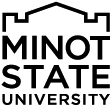Following website guidelines offers numerous benefits, including enhancing brand reputation, improving user experience, boosting SEO rankings, and ensuring compliance with accessibility and web standards.
Getting Started
Minot State University websites can be created by and for:
- Schools and their associated organizations
- Departments and their associated organizations
- Support Centers
- Official events and campaigns
- Student organizations and clubs
- University-affiliated programs and initiatives
Follow the MSU Brand Guidelines for web applications.
Web Applications
One-on-one training for power users is available upon request, and all other website requests for non-core assets should be made to Anton Huether, MSU webmaster.
Third-party applications must adhere to brand standards to maintain consistency and integrity across all digital platforms. Vendors are expected to comply with brand standards, and if they have difficulty meeting these standards, they should contact the marketing department for assistance. Additionally, all third-party applications are subject to brand review to ensure a cohesive user experience across web applications.
Best Practices
By following these best practices, you can create a well-organized, user-friendly website that meets the needs of your audience and complies with web accessibility standards.
Site Organization
Optimizing your site's content organization is key to enhancing the user experience. By grouping folders as clusters of related information, you make it easier for users to navigate deeper into the site. Remember, if content is hard to find, users may leave. So, ensure that the most important information is within a top-level folder to keep users engaged.
Site Navigation
Navigation is the user's roadmap. Present information in a way that users can easily understand and find. Keep the following in mind:
- Clearly indicate the current location on the site.
- Make it easy for users to find their next destination.
- Avoid overwhelming users with too many choices on home and major menu pages.
- Links should be concise and clearly indicate what action you want the user to take.
A good website meets user needs and delivers a positive experience. When creating, updating, or maintaining a site, consider the following questions:
- What is the purpose of the website?
- Who is your target audience?
- What do you want the user to do (calls to action)? Be clear and concise.
- Can the user find information quickly
- Is your content engaging, relevant, and up to date?
Clear and Concise
- Keep content simple, easy to understand, and up-to-date.
- Avoid providing too much information and/or nonrelevant content on the page.
Audience-Focused
Speak to your audience instead of “at” your audience.- Ex: Instead of “Students needing information, please contact...” use “If you need more information, please contact...”
File Naming
Name files appropriately to reflect their contents.
Mobile-Friendly
Ensure content is not overwhelming on mobile devices and does not require excessive scrolling. Use features like accordions to minimize scrolling.
Content Writing Review
Request a content writing review from Veronica Corey regarding spelling, grammar, and context.
Copyright Compliance
Do not use images without permission. Avoid using images from Google.
Photo Resources
The Minot State Marketing Office conducts formal photo sessions of students and faculty throughout the year. See what photos are available for use in our photo gallery. This photo gallery is for internal Minot State use only.
Optimized File Sizes and Formats
Incorporate photos/graphics in headers or pages. Specific file types and sizes should be used for web applications. Request sizing for web from Anton Huether or Tiffany Pierson.
Make websites usable by people of all abilities. Adhere to accessibility guidelines and ensure equal access to all information and services.
Avoid PDFs
Create pages or posts instead of uploading PDFs to ensure better accessibility and search engine indexing.
Proper Table Use
Avoid using tables for page layout. Tables should solely be utilized to display data in a structured, tabular format. Users with disabilities rely on alternative browsers like screen readers and speech output browsers. Implementing tables for layout can lead to difficulties for these users accessing content on the website.
Heading Hierarchy
Headings should follow a logical order to meet web accessibility requirements:
Page Title / H1:
- Most pages should start with an H1 containing the overarching concept.
- Use H1 only once per page and not within the main content area.
Main Content Area:
- Use H2 through H6 headings in descending order.
- Do not skip heading levels to maintain accessibility (e.g., H4 should only follow H3).



